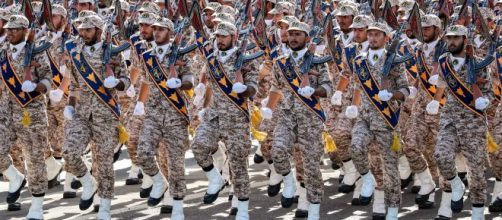Qasim Soleimani is a name many may not have heard. He was the most powerful military commander of Iran in Iraq. He led the Quds force which conducted secret operations abroad for the IRGS. He reported directly to the Iranian Supreme Leader Ayatollah Ali Khamenei. He was a high-value target and US President Donald Trump gave the green light for his assassination. The president, who just dismissed speculation that he had gone for a heart checkup in November, brought into focus the terrorist role of Soleimani. He pointed out that Soleimani was responsible for attacks in New Delhi and London.
BBC has reported that the Quds force, which Soleimani commanded, had a strength of about 5000 soldiers.
Revenge
The death of Suleimani has raised tension between Iran and the US. Iran's supreme leader has said that "severe revenge" awaits those who have been behind the attack on General Qassem Soleimani. When it comes to facing the military might of the US, the strength of Iran's military comes into question. FX street has reported that Suleimani was close to Ali Khamenei and his importance cannot be underestimated as Tehran announced three days of state mourning.
Iran's military
Compared to the USA, Iran's military might can be referred to as modest but in the tactical region where it has to operate it can be considered reasonably formidable.
Iran has 523,000 active military personnel. This has been confirmed by the International Institute of Strategic Studies which is based in the United Kingdom. Iran has about 150,000 Islamic Revolutionary Guard Force (IRGC). The bulk of the force is part of the regular army.
Iran has a small fledgling navy which can be called puny compared to the American task force in the Persian Gulf. The Navy has a strength of about 20,000 personnel. However, the IRGC controls a force called the Basij unit. This is, theoretically, a volunteer force but runs into many thousands. This force is utilized to police the Islamic State and suppress any internal dissent.
On the face of it, the Irani forces do not seem to be much of a threat to American military power.
Iran, however, has a potent missile capability. This missile capability makes up for an obsolete Air Force. The air force does not have many teeth as most of its aircraft are over two decades old and no new aircraft have been inducted.
Missile Technology
Given the state of their air force, the Iranians have concentrated on missile technology. They are in the process of testing space technology and trying to develop intercontinental missiles. They are a long way from this development but they do have short-range missiles that they can use to take out tankers and other ships that pass through the Persian Gulf. Iran does have the capability to block the Strait of Hormuz which is a narrow part of the Persian Gulf.
At this point, the strait is just about 12 miles wide and Iran can bottle up the shipping lane.
Iran has also developed indigenous drone technology. They have entered the air space of Israel from bases in Syria. They were also successful in attacking the oil plants in Saudi Arabia.
Last word
The American military has a dilemma. They will have to calculate the cost of a conflict with Iran. The eternal question, as narrated in Shakespeare's play Hamlet, "to be or not to be" will dog them.


